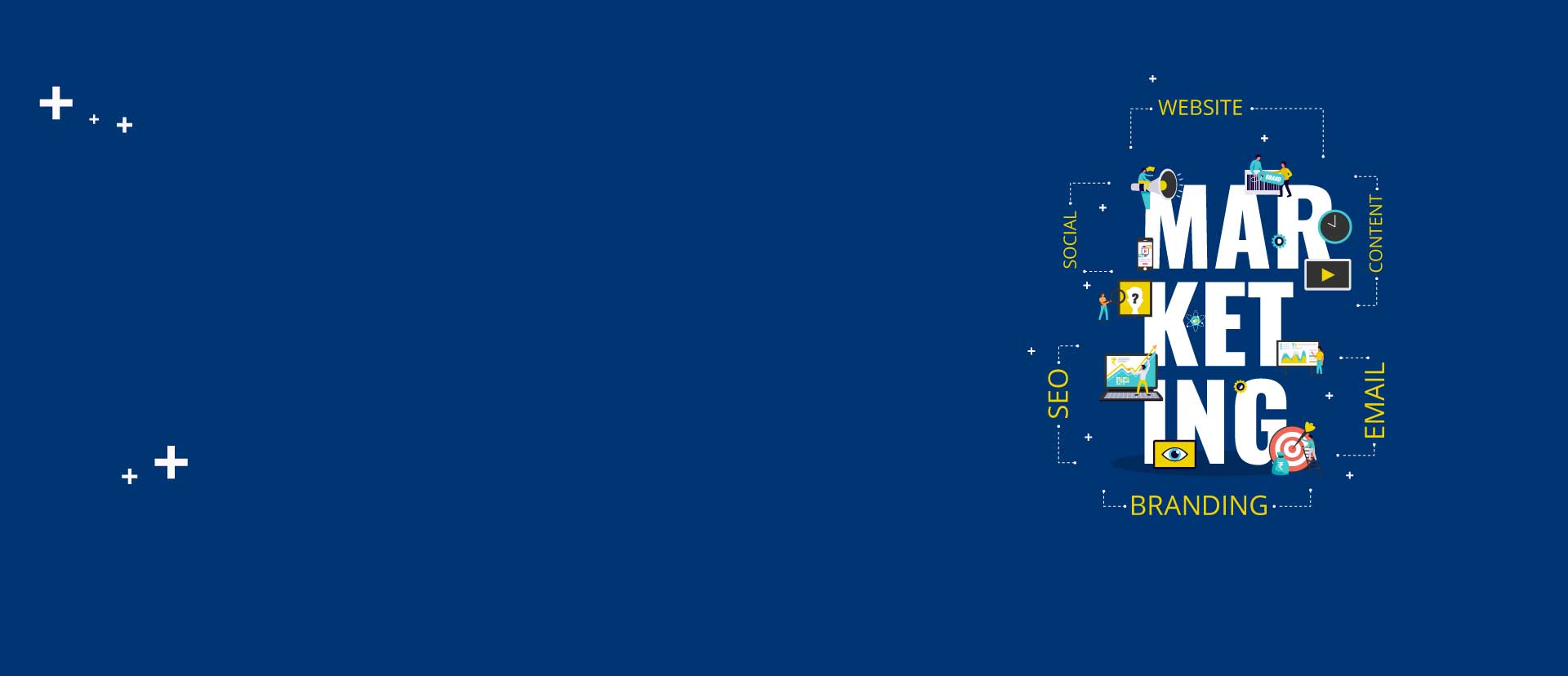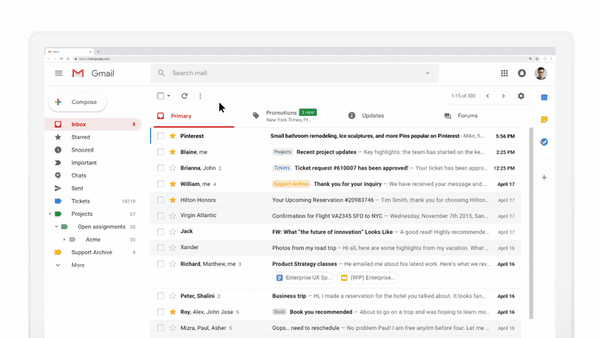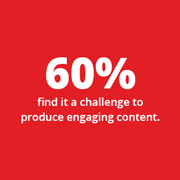
Digital
Marketing
Marketing
For the majority of us as marketers, digital marketing is hardly a novelty. Having said that, the pace at which this realm is branching into newer and more impactful marketing possibilities is incredible.
As a brand, to answer questions like ‘Why should I care and how much?’, we’ll let the facts shed some light:
79% of B2B marketers credit email as the most effective distribution channel for demand generation efforts
90% of searchers begin searching online without a brand preference in mind
54% of social browsers check out social media platforms to research products.
49% of people say they look for influencer recommendations before making a purchase.
82% of buyers viewed at least five pieces of content from the vendor before a purchase
As of 2019, mobile devices, excluding tablets, generated about half of all website traffic globally
If these numbers tell us anything, it would be that the future customer for every business is more screen savvy, connected, and expects to be met with the right offering at the right time.
So, what really is Digital Marketing?
It is every kind of marketing, businesses employ in the offline world – only more hyper-targeted, scalable, dynamic, and online. Think about it. Online ads are like your billboards and posters with an added benefit that they can be targeted to customers based on their online behaviour and interactions. Emails in your inbox can be likened to Newspaper inserts – just that you’ll know how many views you got and how many customers were further interested. Ecom websites and video walk-throughs are like offline stores or promotions, minus the space and sales staff.
So while digital marketing affords you the privilege of highly-integrated customer interaction, it also lets you track, evaluate, and analyse your marketing performance, and allows you to optimise your marketing with sharper and more conversion-led strategies.
But with so much on the table, the battle gets fiercer. For marketers to hit the ground running, understanding the dynamics of every channel and knowing how to effectively leverage them for customer discovery, engagement, and retention is crucial.
To help you get going, we’ve identified the top digital channels that your brand can start to capitalise on:
Email Marketing
“If social media is the cocktail party, then email marketing is the ‘meet up for coffee’. The original 1-to-1 channel.” – Erik Harbison
One of the oldest (online) and till date the most cost-effective marketing enablers, email has been bringing in the bread and butter for businesses of all sizes. Here’s how you can get started:
Email is non-intrusive and user-friendly for customers, and is here to stay. Don’t forget to use dynamic mails to power up your game. Here’s a quick example:

Search Marketing
Much of the active purchases that take place online are driven by search ads. Google AdWords is one of the most popular platforms driving this, and it works on an auction system. All you need to do is bid for the keywords that you think your prospects would enter while searching for your offerings.
While your rivals will be bidding for the same keywords as yourself, what will make your brand stand tall is identifying the right keywords and using it in a manner that seems genuine in your ads and not keyword-stuffed. All this is determined by a Quality Score, which measures how pertinent your ad is to the keyword entered.
Applying the right keyword strategies to get you in front of the right audiences requires being meticulous and making constant optimisations. Thinking creatively and being sharply relevant in what you say will not just lower your cost-per-click but also amplify your Quality Scores. To put it in a nutshell, here’s why all this hard work matters: Online ads increase brand awareness by 80% and people who click on ads are 50% more likely to make a purchase.
So if the complexities of this channel seem overwhelming, outsourcing it to an expert will help you not only measure performance but also catalyse your pace of making it to the first page of Google search results.
Social Media Marketing

“Don’t say anything online that you wouldn’t want plastered on a billboard with your face on it.” – Erin Bury
One of the thumb rules in social media is to be authentic about your business. Whether it’s answering a product query or getting followers to advocate your brand, social media lets you be a real person, and strike a real conversation with your customers.
No matter what the platform, building your brand’s social resonance will depend on identifying your customers’ priorities and needs, and innovatively addressing them. For instance, check out this AR (augmented reality) powered Facebook campaign by L’Oreal, which offered prospects a ‘try-before-they-buy’ concept on their products. This social selling campaign helped them triple the brand’s conversion rates.
Also, to build the right kind of clout ringing in reputable influencers will be imperative. Influencers have the potential to boost your ROI by almost 11x and are known to be one of the most-effective enablers of digital marketing.
So get started by setting up your business page, plan on content buckets, define your look and tone, and start posting regular good-quality engaging content. Pay attention to evolving content formats – we’ve seen everything from static creatives, GIFs, to 360-degree videos and now AR/VR. Explore tools such as stories, reels, and filters. Last but not the least, always track performance, listen in to your followers, and those of your rivals to plan and execute an effective and conversion led-campaign.
Content Marketing

While every marketer is employing some form of this or the other, the top challenges as mentioned above stay true for almost all firms. And for those measuring the performance of their campaigns, culling out the right learnings and applying them to their next initiative is highly critical to see tangible results.
Since this aspect of digital marketing needs no further emphasis, we’ve rounded a few quick ideas to help you better streamline your content marketing investments:
Employ thought leadership in your blogs – whether it’s a how-to or a listicle or any other form. Always work on carving a niche through valuable, research-backed content.
The only way to be unique in an information deluged world is by sharing your own firm’s learnings and insights. Consider turning these into gated content in the form of infographics, whitepapers, e-books, newsletters, etc.
To be consistent in publishing, smart brands repurpose their content by turning well-performing blogs into infographics, social media posts, or even videos to gain more traction.
If you have domain experts or partnerships with industry magnates, planning a webinar series that covers best practices, innovations, and solutions that are sector-specific can help your website attract relevant visitors.
To know how you can navigate this fast-evolving digital marketing landscape with performance-driven strategies designed for success,
connect with Urja today.
Leave a comment
Comments (0)